- Like
- Digg
- Tumblr
- VKontakte
- Buffer
- Love This
- Odnoklassniki
- Meneame
- Blogger
- Amazon
- Yahoo Mail
- Gmail
- AOL
- Newsvine
- HackerNews
- Evernote
- MySpace
- Mail.ru
- Viadeo
- Line
- Comments
- SMS
- Viber
- Telegram
- Subscribe
- Facebook Messenger
- Kakao
- LiveJournal
- Yammer
- Edgar
- Fintel
- Mix
- Instapaper
- Copy Link
- Bluesky
I compared two ATU-100s that use the same circuit board and software, but slightly different components. The longer ATU uses silver mica capacitors and is built a bit more ruggedly, while the shorter ATU uses surface mount capacitors and includes a gratuitous 12V battery.
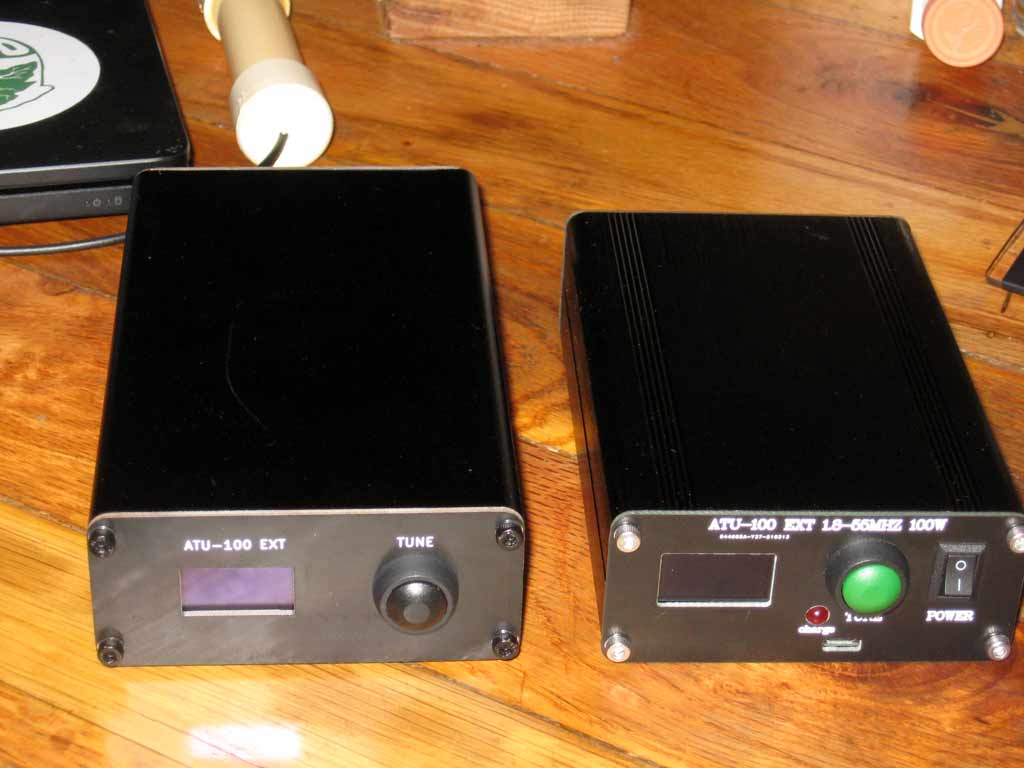
Both tuners use the same circuit board and display, but the shorter tuner includes a 12-volt battery and dc/dc converter to allow charging the battery with a 5V usb cable.
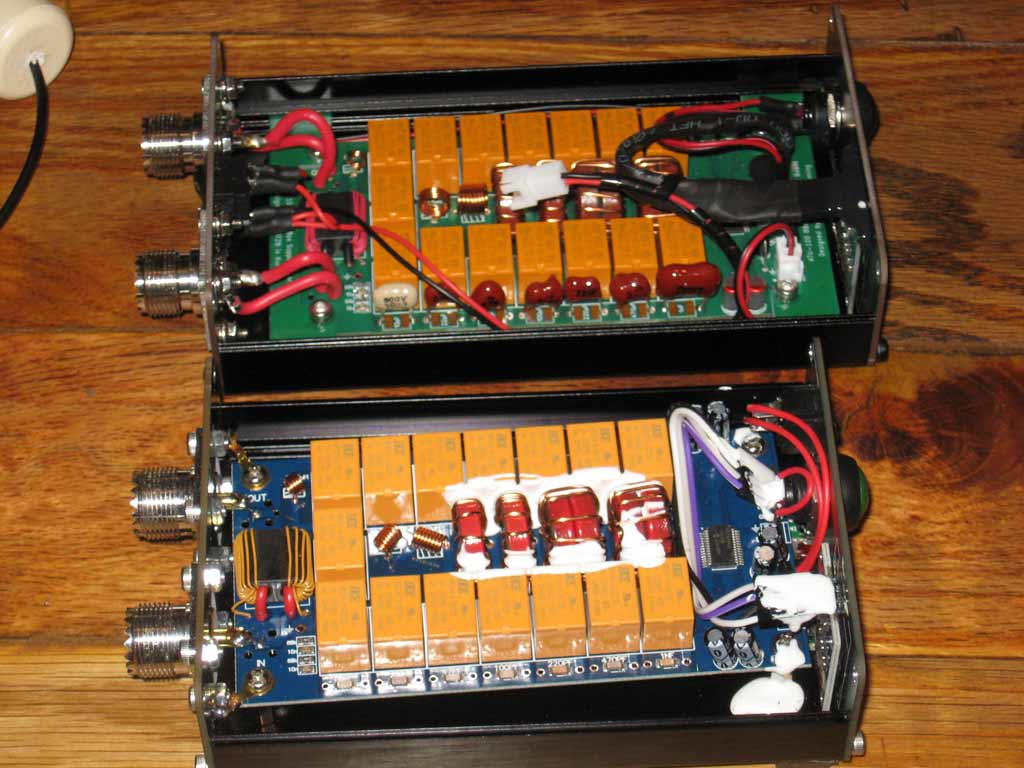
The longer tuner uses silver-mica capacitors, and the circuit board is mounted on secure standoffs with small re-enforcing boards at each end. The shorter tuner uses surface-mount capacitors, with one end secured to the end plate with solder lugs, and the other end mounted on standoffs that are glued to the bottom of the case.
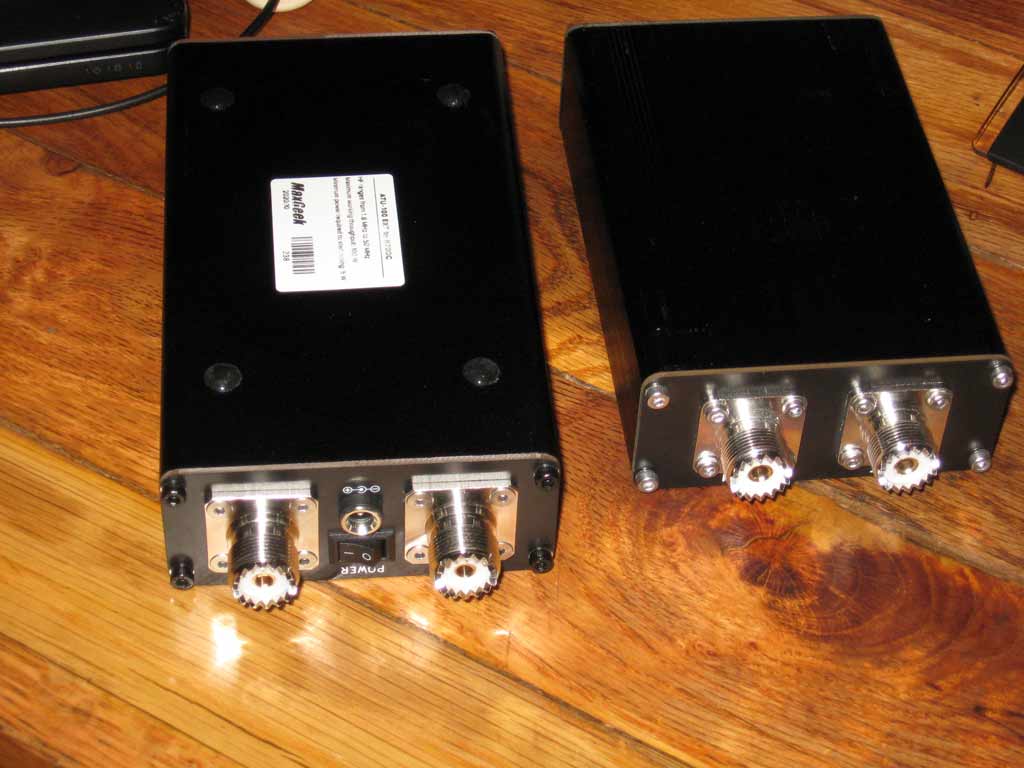
Standoffs on the longer unit are secured to the bottom and capped with small rubber-baby-buggy-bumpers.
Power meter test
I used a Yaesu FT-990 to provide 10 watts into a dummy load (as indicated both by the Yaesu and an external SWR/power meter). Then I put each tuner between the transmitter and power meter to see what power levels each ATU would report (with the tuner in bypass mode – no inductance and no capacitance added).
The long ATU indicated 8.1 watts in and 6.3 watts to the antenna, 1.02 SWR, and 78% efficiency. The short ATU indicated 6 watts in and 4.6 watts out, and also 78% efficiency. The power meter between the tuner and dummy load showed about 9.9 watts out for both tuners (and virtually perfect SWR), which seems closer to 99% efficiency (which one would expect into a dummy load while effectively in bypass mode).
Tuning tests
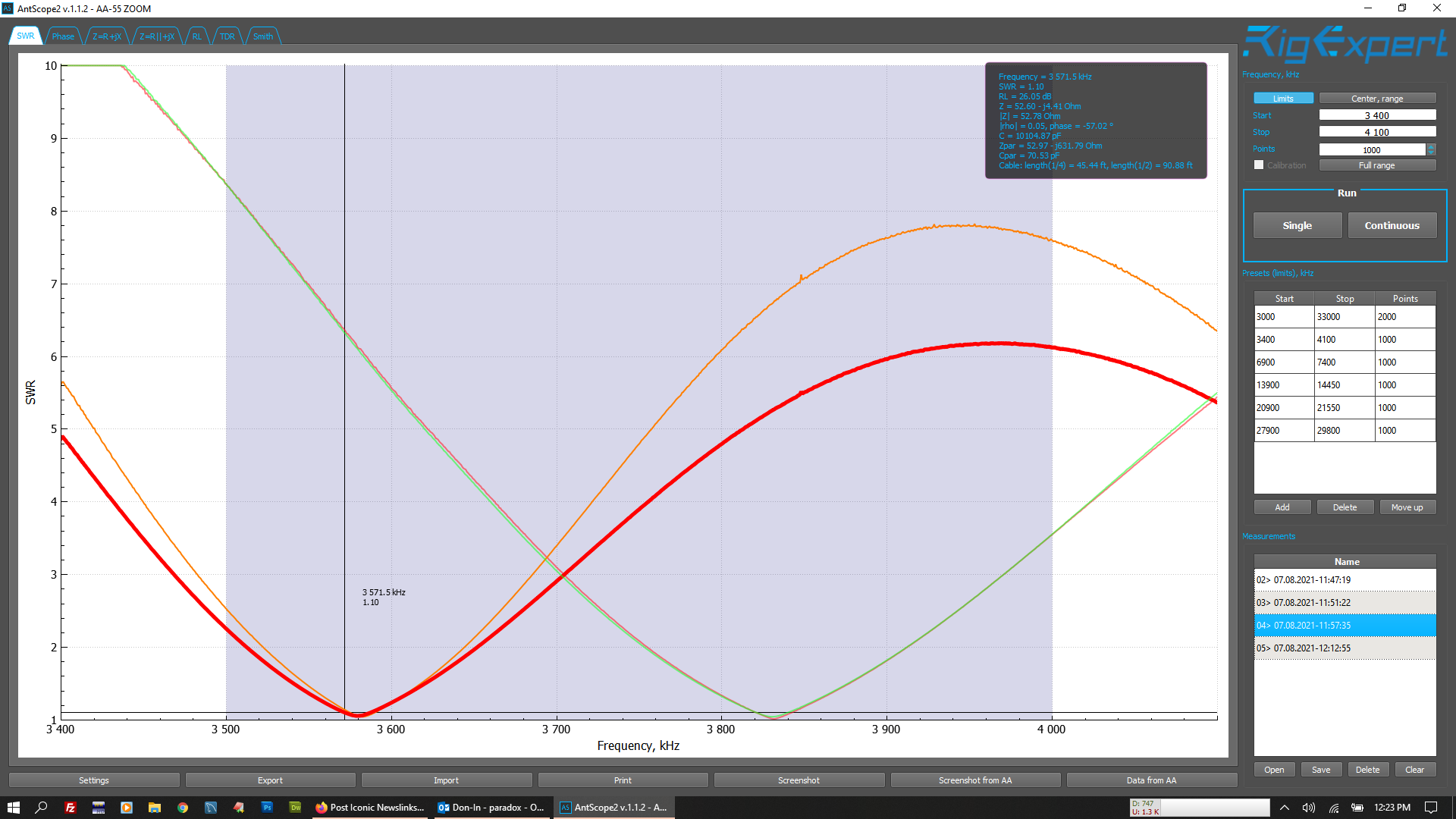
80 meter dipole normally resonant at 3831 KHz (green line). Red is the swr using shorter ATU to tune down to 3570 KHz, orange is swr using the longer ATU. I’m surprised that the ATU using surface-mount capacitors seems to perform slightly better. They both achieve approximately the same SWR dip near the transmitted frequency, but with slightly different inductance and capacitance (1320 pf and 2.82uh vs 1470pf and 2.2 uh). Both units claim 52% efficiency at 3570 KHz. The longer ATU was closer to the correct input/output power levels, but both units always agreed on the efficiency (even though the efficiency and power levels seem to be substantially incorrect when transmitting into a dummy load).
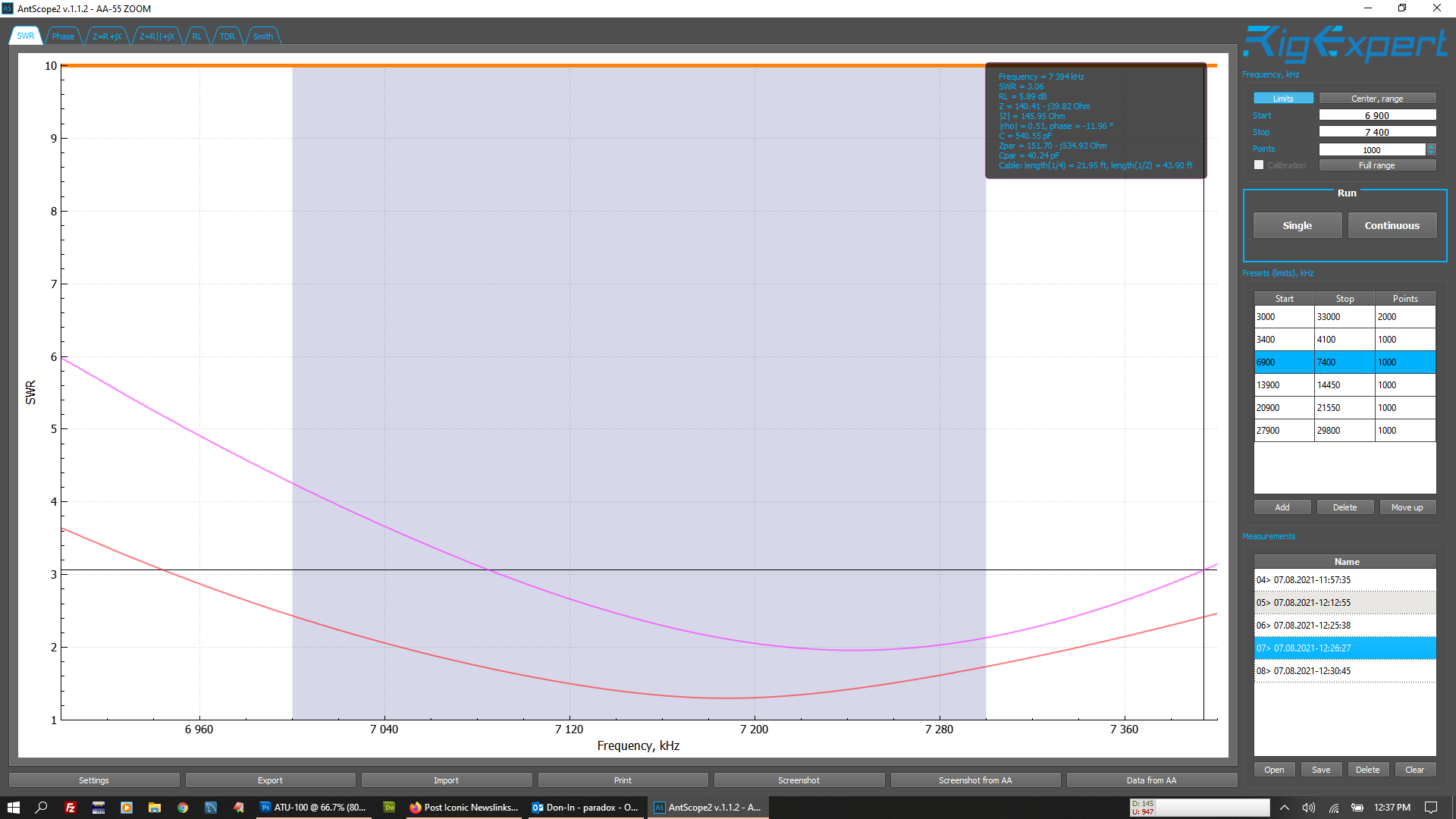
80 meter dipole – orange line at top show the swr w/o tuner exceeds 10/1 across 40 meter band. Red is swr using the short ATU tuning at 7211 Khz (40% eff), violet is swr using the longer ATU at the same frequency (38% eff).
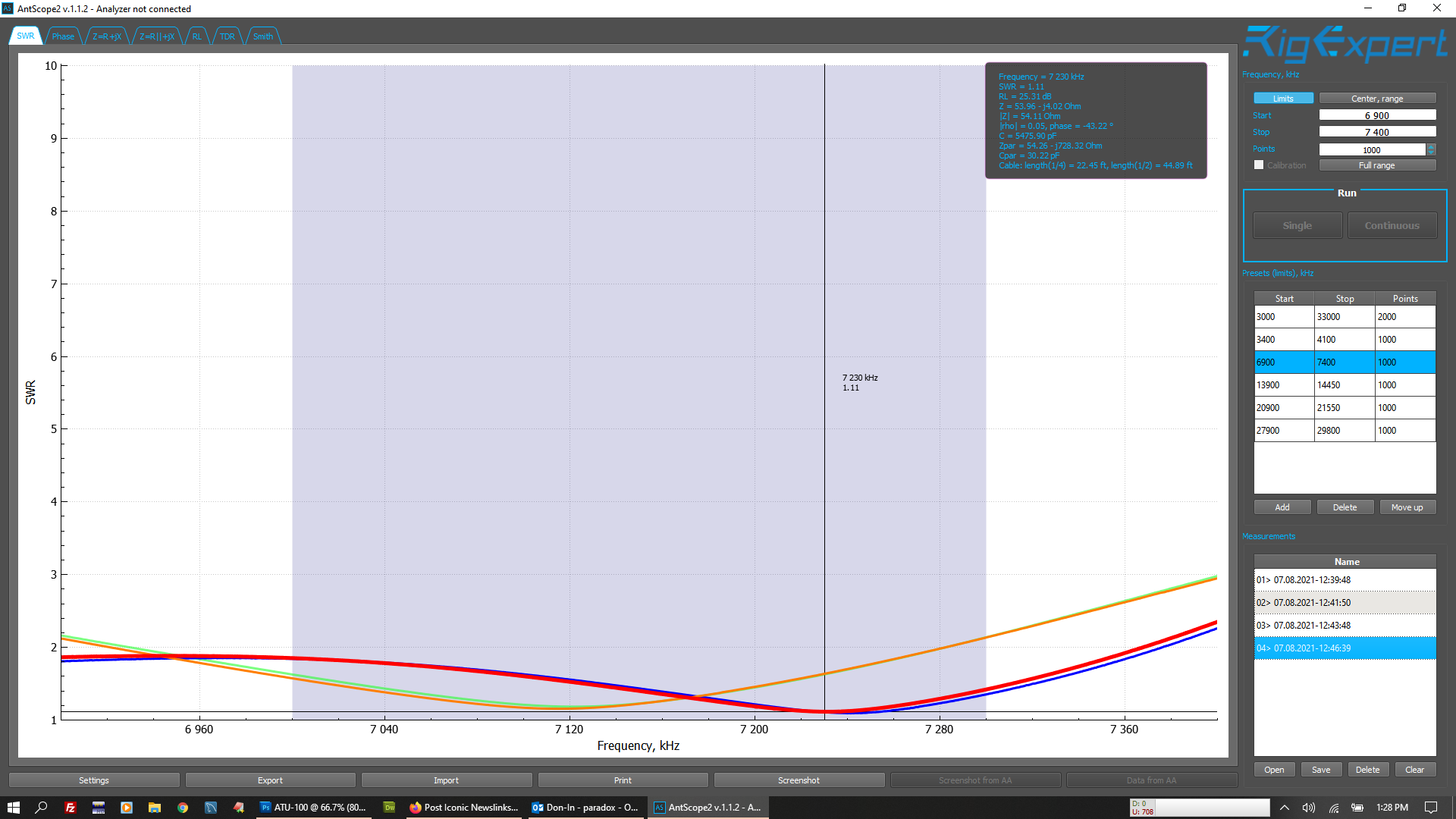
18-AVQ vertical. Both tuners perform about the same. Green and orange are the swr with each tuner in bypass (resonant at about 7110 KHz). Red and blue are the short and long ATUs tuning at 7211 Khz. Both units reported 77% efficiency (which is probably closer to 97 or 98% in reality).


Interesting analysis Don.